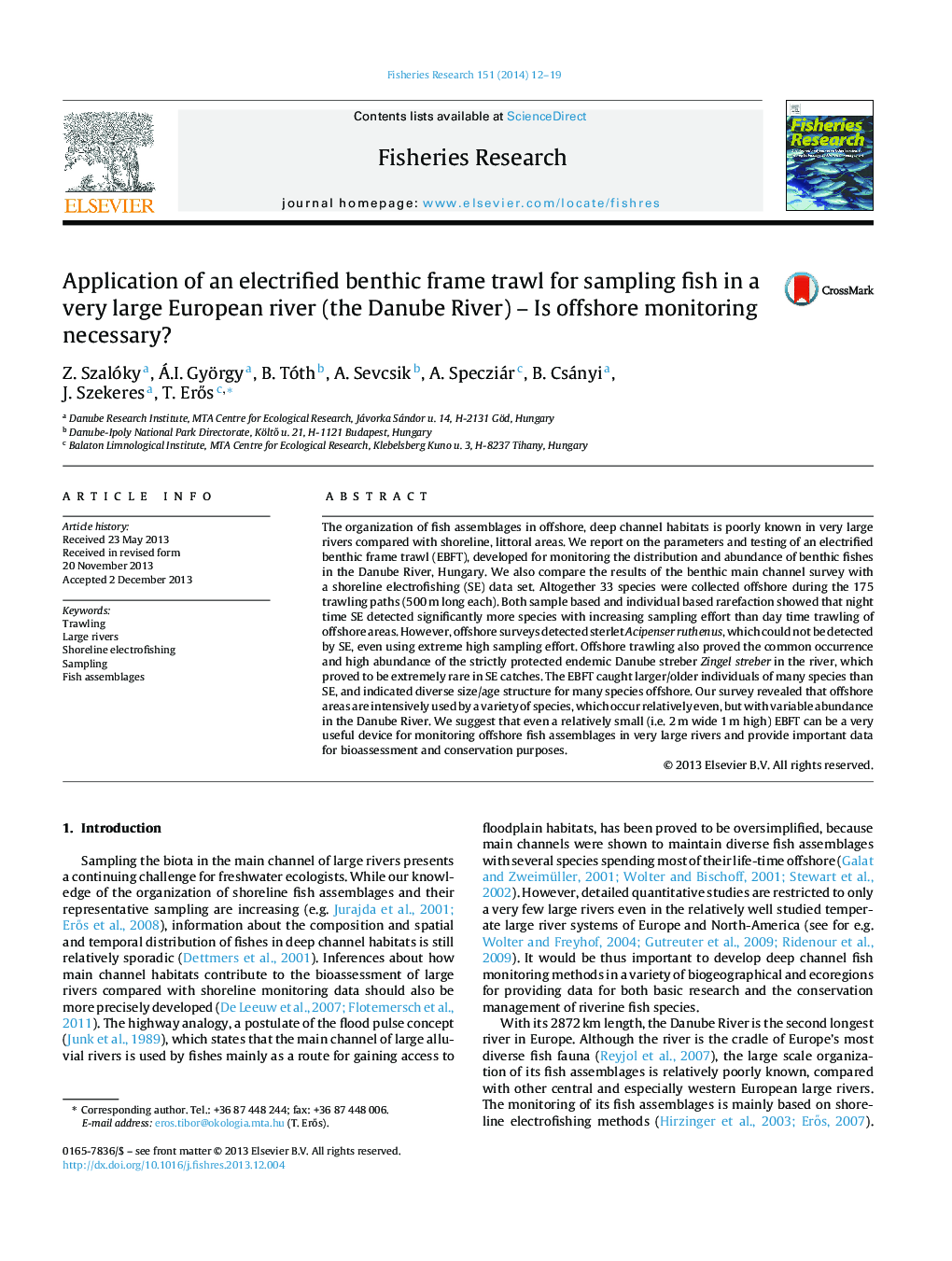| Article ID | Journal | Published Year | Pages | File Type |
|---|---|---|---|---|
| 6385935 | Fisheries Research | 2014 | 8 Pages |
Abstract
The organization of fish assemblages in offshore, deep channel habitats is poorly known in very large rivers compared with shoreline, littoral areas. We report on the parameters and testing of an electrified benthic frame trawl (EBFT), developed for monitoring the distribution and abundance of benthic fishes in the Danube River, Hungary. We also compare the results of the benthic main channel survey with a shoreline electrofishing (SE) data set. Altogether 33 species were collected offshore during the 175 trawling paths (500Â m long each). Both sample based and individual based rarefaction showed that night time SE detected significantly more species with increasing sampling effort than day time trawling of offshore areas. However, offshore surveys detected sterlet Acipenser ruthenus, which could not be detected by SE, even using extreme high sampling effort. Offshore trawling also proved the common occurrence and high abundance of the strictly protected endemic Danube streber Zingel streber in the river, which proved to be extremely rare in SE catches. The EBFT caught larger/older individuals of many species than SE, and indicated diverse size/age structure for many species offshore. Our survey revealed that offshore areas are intensively used by a variety of species, which occur relatively even, but with variable abundance in the Danube River. We suggest that even a relatively small (i.e. 2Â m wide 1Â m high) EBFT can be a very useful device for monitoring offshore fish assemblages in very large rivers and provide important data for bioassessment and conservation purposes.
Related Topics
Life Sciences
Agricultural and Biological Sciences
Aquatic Science
Authors
Z. Szalóky, Á.I. György, B. Tóth, A. Sevcsik, A. Specziár, B. Csányi, J. Szekeres, T. ErÅs,
